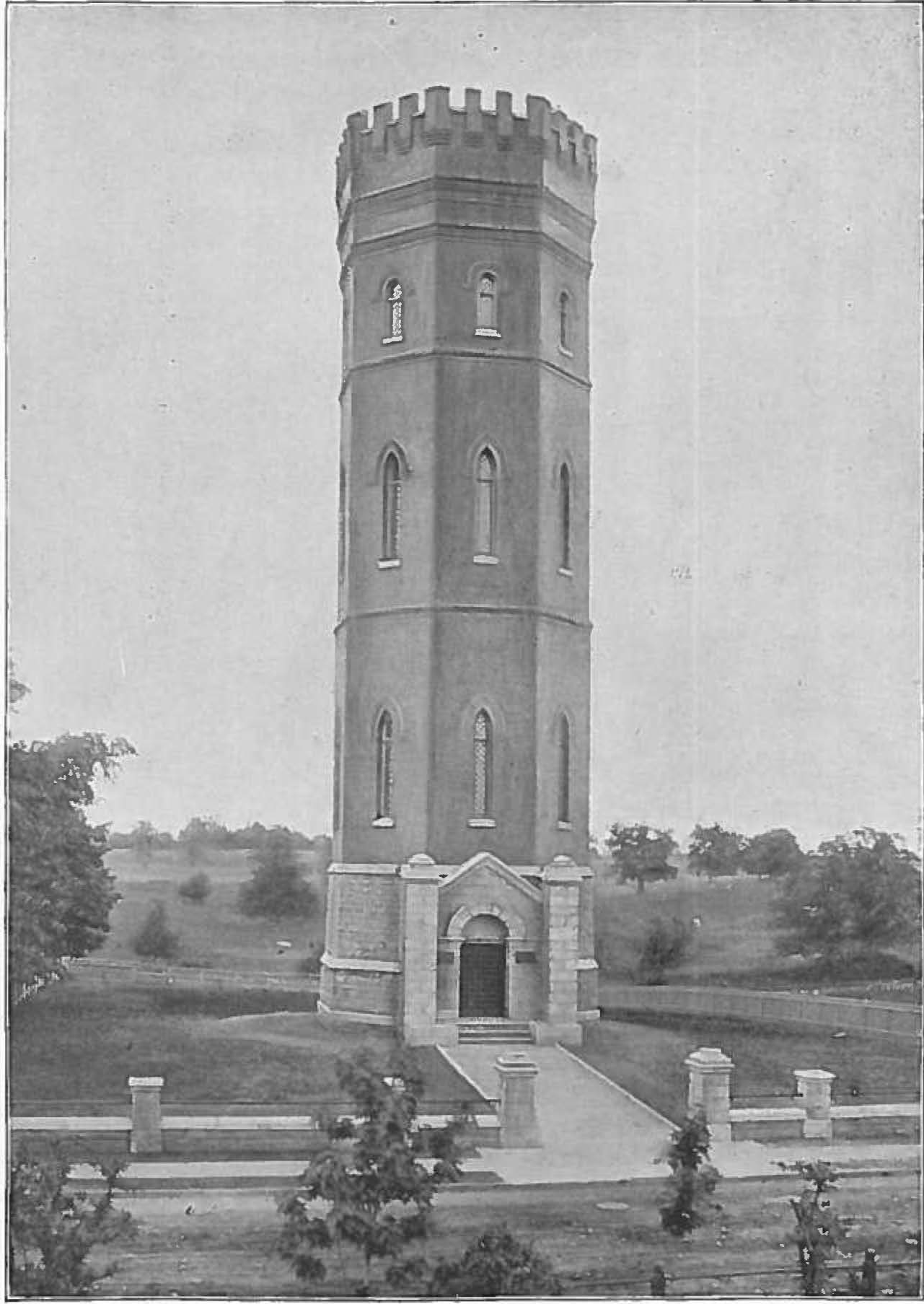
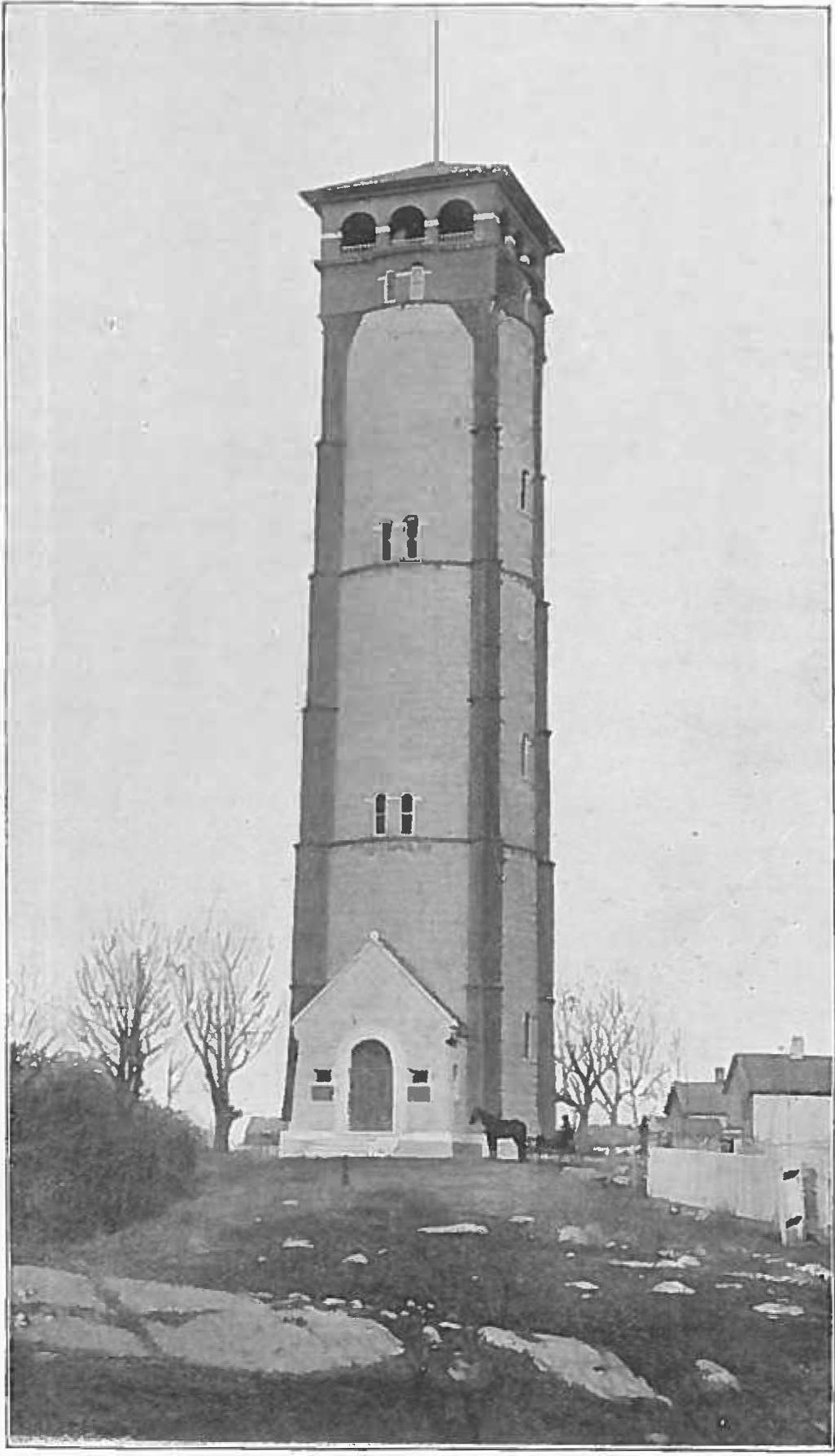
| Introduction | Historical Background | Chronology | Geography | Biography | Technology | Ownership and Financing | General Bibliography |
| Middle Atlantic States | New York | Yonkers |
Yonkers was settled by the Dutch in 1645, incorporated as a village in 1855 and as a city in 1872.
The Yonkers Water Company was incorporated in 1855 with a capital stock of $100,000 by William H. Arthur, George H. Bell, Joseph Russell, Joseph H. Jennings, Jonathan Ball, Thomas C. Cornell and Frederick A. Coe "for the purpose of supplying the said village of Yonkers with pure and wholesome water."
Exactly ten years later, another Yonkers Water Company was incorporated by with an initial capital stock of $100,000 by William Radford, Orrin A. Bills, Robert J. Douglas, James P. Sanders, Thomas H. Collins, Robert P. Getty, William Hutchings, Horace P. Whitney, Asa Hinckley, and Edwin B. Dusenberry "for the purpose of supplying the said village of Yonkers with pure and wholesome water." Their charter was revived in 1867 and the incorporators amended to include: John T. Warring, William Radford, Robert P. Getty, Orrin A. Bills, Justus Lawrence, James P. Sanders, George Osterheld, Asa Hinkley, Robert J. Douglass, William Hutchings, Horace P. Whitney, Edwin B. Dusenbery, and Thomas H. Collins.
Neither of the above companies built anything.
The Village of Yonkers received authority build its own water works in 1871, but voters turned it down on January 9, 1872.
Yonkers was incorporated as a city in 1872, and a law passed the following year gave the city authority to build water works that did not require approval by local voters. Water commissioners were appointed and engaged engineers, whose report was accepted. An initial system providing fire protection began operation on January 1, 1874, while construction of the larger system was underway. The initial system operated by gravity from distribution reservoirs fed from higher elevations. High service pumps and towers were added in 1884 and 1891 to serve the higher elevations of the city.
The first high service water towers was built in 1883 at 43 Lake Avenue (one block west of the Lake Avenue Reservoir) with a capacity of 40,000 gallons and the second in 1891 on Nodine Hill at 275 Elm Street with a capacity of 225,000 gallons. The 1891 tower was designed by local architect Edwin A. Quick. Photos of the tower from from the 1896 History of Yonkers are shown below.
 |
 |
| Lake Avenue Water Tower | Elmwood Avenue Water Tower (Nodine
Hill) |
The 1883 Lake Avenue tower was demolished in 1949. A picture of the 1891 Elmwood Avenue tower as it looked in 1933, four years before its collapse during a windstorm in 1937, is included in a 1965 newspaper article. A new steel tower was built on the site of the 1891 tower that was completed in 1939, as shown in these pictures of its construction (from Rich.soyosunset). Another similar tower was built in 1959 at 130 Concord Road, which is adjacent to the Catskill Aqueduct.
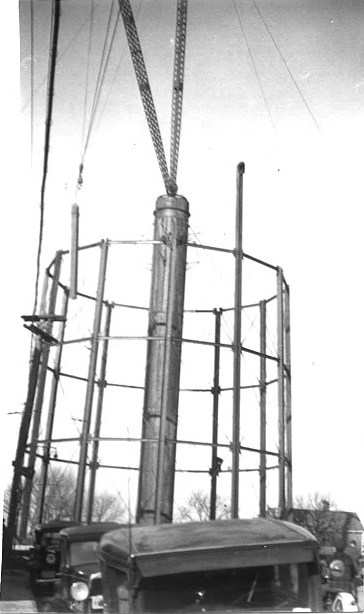 |
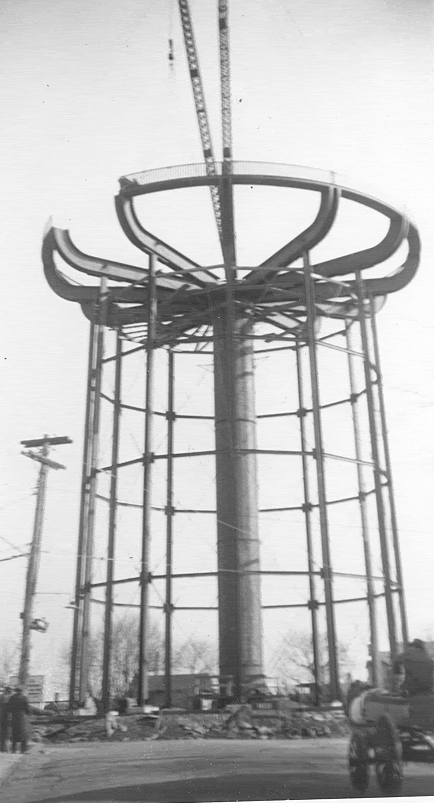 |
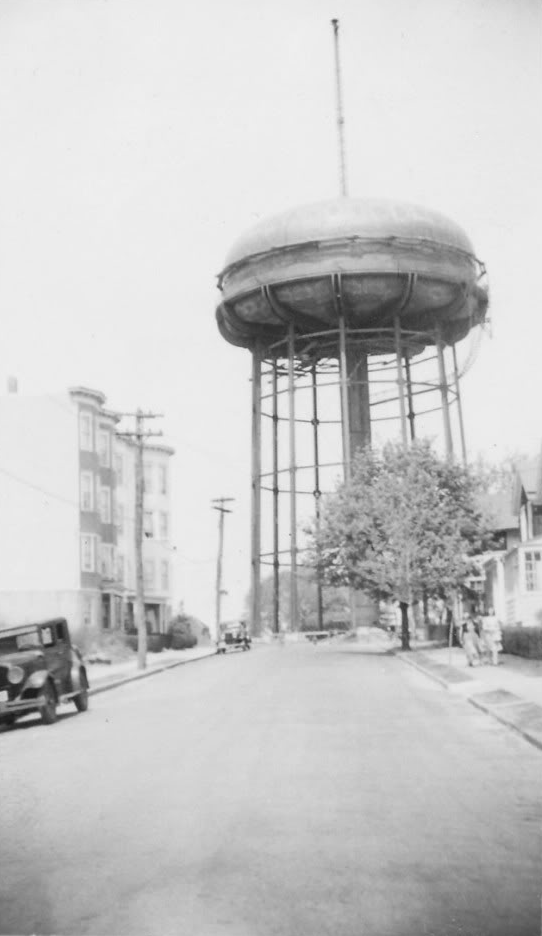 |
The city had an emergency connection to New York City's Croton Aqueduct by 1897, and at some point abandoned its own water supplies and began taking all of its water from the New York City system, whose aqueducts run through Yonkers.
Water is provided by the City of Yonkers, which purchases water from New York City.
References
1855 An act to incorporate the "Yonkers Water
Company." April 12, 1855.
1865 An act to incorporate the "Yonkers Water Company." April 12, 1865.
1867 An act to revive, continue in force and amend the act entitled "An act to incorporate the Yonkers Water Company," passed April twelfth, eighteen hundred and sixty-five. April 25, 1867.
1871 An act to supply the village of Yonkers with pure and wholesome water. May 10, 1871.
1873 An act to provide for a supply of water in the city of Yonkers. February 28, 1873.
1873 The
New York Times, August 10, 1873, Page 8.
The Board of Water Commissioners, of Yonkers, have secured a partial
supply of pure water for that city from Bowers' Pond for $25,000 and steps
are being taken to acquire legal possession of the property. The
pond has an area of upward of four acres, and is located 292 feet above
high water mark. It is also proposed to secure the water of Grassy
Sprain Brook.
1874 "The Yonkers Water-Works," The New York Times, January 2, 1874, Page 8. Exhibiting the workings of the new water works.
1874 The
New York Times, April 5, 1874, Page 12.
Gen. George S. Greene, formerly Chief Engineer of the Croton Aqueduct
Department of New-York, has been appointed Consulting Engineer of the
Yonkers Water Works.
1874 An act to amend an act entitled "An act to provide for a supply of water in the city of Yonkers," passed February twenty-eighth, eighteen hundred and seventy-three. May 22, 1874.
1875 "The Yonkers Water-Works," The New York Times, May 23, 1875, Page 5. | Part 2 |
1877 An act to amend chapter thirty-six of the laws of eighteen hundred and seventy-three, entitled "An act to provide for a supply of water in the city of Yonkers." May 22, 1877.
1880 An act to amend chapter thirty-six of the laws of eighteen hundred and seventy-three, entitled "An act to provide for a supply of water in the city of Yonkers." May 27, 1880.
1881 Yonkers, Engineering News, 8:342-343 (August 27, 1881)
1882 Yonkers, from "The Water-Supply of Certain Cities and Towns of the United States," by Walter G. Elliot, C. E., Ph. D.
1883 "The Water Supply of the city Yonkers, N.Y.," from Engineering News 10:450 (September 22, 1883)
1884 "Yonkers, N. Y. Water Tower," Engineering News 12:184-185 (October 18, 1884) | Drawing of Lake Avenue Water Tower |
1886 "The Water Department," History of Westchester County: New York, Including Morrisania, Kings Bridge, and West Farms, which Have Been Annexed to New York City, Volume 2, by John Thomas Scharf
1888 "Yonkers," from Manual of American Water Works, Volume 1.
1890 "Yonkers," from Manual of American Water Works, Volume 2.
1891 "Yonkers," from Manual of American Water Works, Volume 3.
1892 "The New High Service Water Tower at Yonkers, N.Y.," Engineering News 27:494 (May 19, 1892) | Drawing of Nodine Hill (Elm Avenue) Water Tower |
1896 "Water Supply," from The History of Yonkers: Westchester County, New York, by Charles Elmer Allison
1897 "Yonkers," from Manual of American Water Works, Volume 4.
1902 Yonkers
illustrated, by George Rayner.
Page 15: Water Supply. City water is supplied from the Sprain
and Grassy Sprain, supplemented by a system of tube wells, the latter
having been accepted by the city in March, 1900, at which time their
capacity of supplying 1,000,000 gallons per day was demonstrated.
When the rapid growth of the village made imperative the establishment of
a water-works system the citizens committee engaged the services of
William W. Wilson as Chief Engineer, and General George S. Green as
Consulting Engineer. After a careful examination of the Pocantico,
the Nepperhan, and the Bronx watersheds both eminent authorities agreed
that the waters of the Sprain and Grassy Sprain would not be so apt to
become impure, through pollution of the valleys, as would the other
streams. An analysis of the waters, made by Professor Charles F. Chandler,
Ph.D., M.D., was followed by a most favorable report as to their purity.
The Lake Avenue reservoir (capacity 3,600,000 gallons) was first
constructed, being completed in 1874. The Grassy Sprain reservoir
(capacity 400,000,000 gallons) was next constructed; then the Fort Field
reservoir (capacity 60,000,000 gallons). The Lake Avenue and Elm Street
water towers are each four hundred and fifty feet above the Hudson River,
and supply the higher levels, the overflow of which are on a level with
each other.
The city is engaged in increasing the water supply by an enlargement of
its tube well plant on the Sawmill River Road, but by far the most
important departure in regard to the water supply in recent years has been
the purchase of about fifty acres of land, and a dam and pond already
built at Woodlands, on the Sawmill River, for the sum of $50,000. It is
proposed to connect this supply with the present system by an iron conduit
which will be about five miles long. There are eighty-four miles of water
mains, 857 hydrants, and 5,200 taps and connections now in use.
Private families, as well as factories, receive city water measured by
meters, the cost to the former being fifteen cents per hundred cubic feet,
and the manufacturing industries are supplied at greatly reduced rates.
The average daily consumption of water is 3,700,000 gallons. The Yonkers
waterworks supplies the city of New York with the water consumed in the
Riverdale, Spuyten Duyvil, and Woodlawn sections of that city.
The cost of the Yonkers waterworks to date has been $1,626,000, and the
city owes $1,475,000 on their account, and has a sinking fund for the
redemption of water bonds of $360,072.68.
The Presidents of the Water Hoard since its origin have been: Stephen
Barker, Isaac H. Knox. Ethan Flagg, Rudolf Eickemeyer, William H. Doty,
and John C. Shotts. The Board is at present constituted as follows: Joseph
H. Beall, President; William H. Doty, Treasurer; Michael Walsh, Joseph
Miller, and Patrick J. Flannery. William Henry Baldwin is Chief
Engineer.
1905 New York Water Company v. The Board of Water Commissioners of the City of Yonkers, Papers on Appeal from Order Granting Motion for a Bill of Particulars, Supreme Court, Appellate Division, Second Judicial Department
1915 "The Yonkers Water Supply and its Future Development," by D. F. Fulton, Yonkers City Engineer, Journal of the American Water Works Association 2(1):1-12 (March 1915) | Also here |
1915 "The Yonkers Water Supply and its Future Development," by D. F. Fulton, Water and Gas Review, 25(10):9-12 (April 1915)
1920 Annual
Report of the New York State Department of Health For the Year Ending
December 31, 1919, Volume II.
Pages 363-364: Yonkers public water supply inspection.
1937 "Nodine Hill Tower Collapses; Flood Wrecks Homes, Hurts 9," The Herald Statesman, October 23, 1937, Pages 1, 4 & 5.
1937 "Casualties Mount in Tower Collapse," The Herald Statesman, October 25, 1937, Page 1.
1962 "Yonkers," from Public Water Supplies of the 100 Largest Cities in the United States, 1962, US Geological Survey Water Supply Paper 1812, by Charles Norman Durfor and Edith Becker
1965 "Nodine Tower: 'Great Flood' of 1937," The Herald Statesman, August 21, 1965, Page 10. | Picture of Nodine Hill Tower as it looked in 1933 |
1969 "Chronology: Yonker's Water System and How It Grew," The Herald Statesman, February 20, 1869, Page 4.
2005 The urban origins of suburban autonomy, by Richardson Dilworth.
2008 Yonkers,
by Yonkers Historical Society and the Blue Door Artist Association
Page 38 includes a picture of the 1939 steel water tower that replaced the
1891 tower that collapsed in 1937. The 1891 tower picture on the
same page does not resemble either the 1884 or 1891 brick water towers.
© 2007 Morris A. Pierce